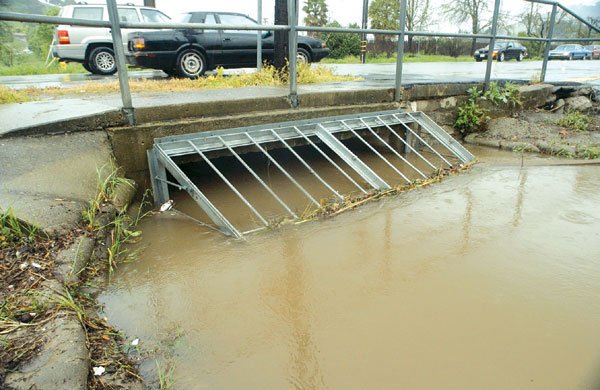Morgan Hill
– A $95-million project to prevent a calamitous flood in
downtown Morgan Hill is in danger of losing federal funding because
the U.S. Army Corps of Engineers believes the project’s costs
outweigh its benefits.
Morgan Hill – A $95-million project to prevent a calamitous flood in downtown Morgan Hill is in danger of losing federal funding because the U.S. Army Corps of Engineers believes the project’s costs outweigh its benefits.
“It was a real shock when I heard that the Corps couldn’t continue to focus effort on this project,” Morgan Hill Mayor Dennis Kennedy said Tuesday. “We had known it was very difficult to get federal funding, but it was a project that was moving forward slowly. So this was a real shock.”
Marc Klemencic, a deputy operating officer for the Santa Clara Valley Water District, said Tuesday that the funding, about $55 million, still may come through.
“We’ve been working closely with Morgan Hill and doing things to move the project forward,” Klemencic said. “We will continue to work with the Corps, check their numbers, and [find support] for the projects. Everything is preliminary. Nothing is formal.”
The money is needed for a series of projects to prevent flooding on the Llagas Creek, and its offshoot, the Little Llagas, which runs through downtown Morgan Hill, just west of Monterey Road.
The projects include enlarging both creeks and constructing a diversion channel between them. They’re necessary because Morgan Hill sits in what’s known as a 100-year flood plain, meaning every year there’s a 1 percent chance the entire downtown area will end up under water. There’s some flooding almost every year.
“A lot of the downtown area is in a flooding area because the creek is undersized for the amount of runoff that comes down the hill,” Klemencic said. “In a 100-year flood, a lot of downtown downstream from Monterey Highway would be flooded.”
The district has been working with state and federal partners to improve the Llagas from north of Wright Avenue in Morgan Hill for 50 years. A $52-million phase improving the creek as far north as Buena Vista Avenue in San Martin was completed in 1996, but the project has been in limbo ever since.
Budget trouble has imperiled federal and state funding, and the project was complicated when the steelhead trout was placed on the endangered species list. Still, the district hoped to start work in 2007 with federal funds, $27 million in state money and $12.7 million raised by 2000’s Measure B, a property tax to promote clean and safe creeks.
A 100-year flood would damage about 1,600 homes and business and cost about $8 million. In an average year, flooding costs about $900,000. An Army Corps representative did not respond to phone calls Tuesday, but at this point, the Corps doesn’t believe the danger justifies the project’s price tag, Klemencic said.
“The U.S. Corps is using a 50-year life of the project, but we wouldn’t replace it after 50 years,” Klemencic said. “You have to look not just at damages, but lost business and frequency of flooding. We’ve been trying to leverage local money, but the state hasn’t been paying its share of the partnership on flood protection. Without and state and federal funding, $12.7 million is far short of what’s needed to finish the project.”
In the mean time, Klemencic said, the district and Morgan Hill are paying for consultant studies and will begin work on the diversion channel.
Charles Weston, a Morgan Hill architect and chairman of the city’s planning commission, said the city needs to move swiftly on improving flood safety because the issue scares business from downtown Morgan Hill.
“It inhibits development of a street-level, pedestrian-friendly environment, like if we wanted to copy Berkeley with restaurants with street-side seating and things like that,” Weston said.
Morgan Hill’s position in the flood plain essentially forces businesses to build above ground-level. Weston said the extra costs often torpedo projects and are making it hard for the city to develop the former Sunsweet processing plant site at 3rd and Depot streets.
“It’s paralyzing the city’s ability to develop downtown,” Weston said. “But there are a number of solutions depending on how you want to spend your money. There are a number of things you can do creatively to get around it.”
The city has begun to develop a specific plan for downtown development and has allotted some of its residential growth to the area. Weston believes investments by Morgan Hill will inspire the federal government to chip in, and he wants the city to explore cutting deals with developers that would allow them to build at street level and waive the city’s liability for flooding.
Mayor Kennedy said that the city is working on a number of plans to encourage development now, regardless of what happens with the Llagas projects, including a local bond measure.
“We can’t stop and wait 10 years for flood improvements to be done.” he said. “Downtown can’t wait 10 years. We can find ways to build in and around the plain. We just need to look at projects differently.”













